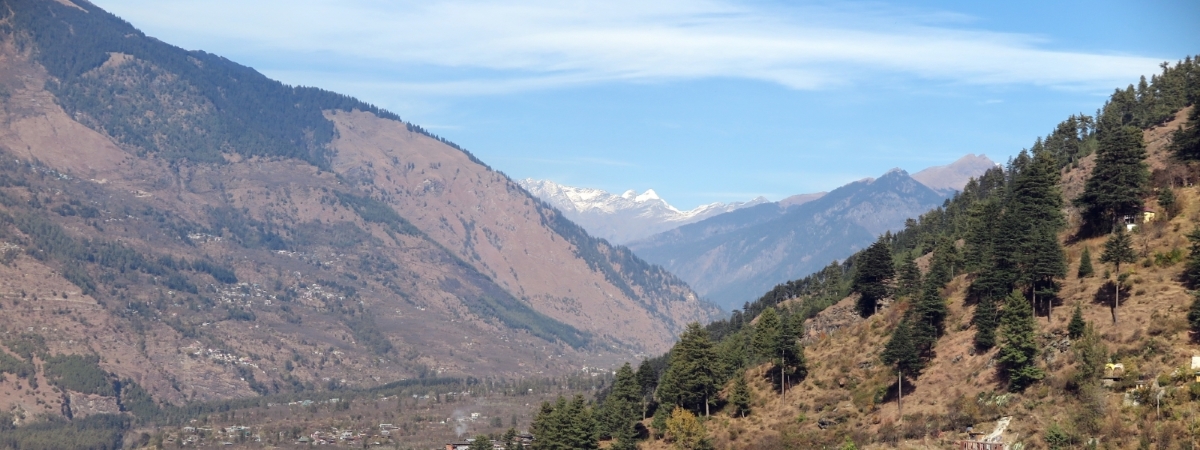Our website is dedicated to the Pahari languages, the Indo-Aryan languages of North India. The term “Pahari languages” comprises the languages covering the territory of India south of the Himalayas (the states of Uttarakhand, Himachal Pradesh, Jammu and Kashmir) and Nepal. You will find here our own materials as well as links to other resources and publications on the Pahari languages and the culture of North India.
The site is intended primarily for linguists. However, we believe it will be of interest for other professionals such as anthropologists and ethnographers. It also provides useful information for travelers headed for the Himalayas. We have created this site for Kullui speakers as well. These wonderful people inspired our project and gave us an opportunity to get in touch with the life and culture of amazing India.
Our group is currently working on a description of the Kullui language (the Himachali Pahari group of languages). We collected our field data in 2014, 2016 and 2017 during our linguistic expeditions to the village of Naggar (Himachal Pradesh). The project is ongoing, so all the data on the site is being constantly updated, complemented and refined.
The current objectives of the project
- Documenting the Kullui language at the modern linguistic and technical level – creating a dictionary, transcribing the corpus of Kullui texts and doing its morphological markup, processing audio and video recordings.
- Theoretical research and description of the phonetics, phonology and grammar of the Kullui language.
- Field study of the Kullui dialects
- Field study of other Pahari languages
- Study and description of Pahari languages area distribution and typological features
- Study of the sociolinguistic situation in the region
- Establishing contacts with the local researchers
- Creation of an information resource on languages and culture of North India
We would like to make linguistic materials on the Kullui and other Pahari languages available for linguists (indologists, typologists) and native speakers. We hope that our work will help preserve minority languages that are an integral part of the history and culture of the Indian people.
The beginning of the project
The idea of this project was born in 2013 at the Institute of Linguistics of the Russian Academy of Sciences when Julia Mazurova and Elena Knyazeva (Shuvannikova) of the Areal Linguistics Sector considered studying minor languages of India to be a relevant linguistic task. As a starting point of the study, they chose Kullui, an Indo-Aryan language spoken in the district of Kullu (Himachal Pradesh, North India).
This choice was based on several factors. Firstly, this area has a vast linguistic diversity, however, it has been poorly studied. Secondly, this region has close and long-standing ties with Russia – The International Roerich Memorial Trust (IRMT) founded in 1993 by Svetoslav Roerich is located in Naggar (Kullu district). Nowadays this place is one of the focuses of the Russian-Indian cultural cooperation.
Having selected the region, we started gradually developing our project. As the first stage, in August 2013, Elena Knyazeva visited Naggar and collected initial information on the possibility of fieldwork in the area. After that, we started preparing for the expedition to Naggar. We needed to study all available (but very few) materials on Kullui and other Pahari languages and to master the methodology for working with little-studied languages in the field. At this stage, other members of the project joined the team – Irina Samarina, Eugenia Renkovskaya, Anastasia Krylova and Ksenia Melnikova.
The FFLR grant received in 2014 allowed us to organize a linguistic trip to India. Our three-week expedition was very fruitful, in terms of both establishing contacts with local people and collecting linguistic material. Upon return, we started to process and analyze the data.
In 2016 our project has received the financial support from Russian Foundation for Basic Research (RFBR) (№ 16-34-01040 “Grammar and dictionary of the Kullui language, headed by E.M. Shuvannikova) and this grant has allowed us to continue our fieldwork (2016, 2017) and research on Himachali.
At present, the project participants are working on the expedition materials. The results are provided and updated on this website. In the future, we are planning to document and study other languages of this most interesting linguistic area.




